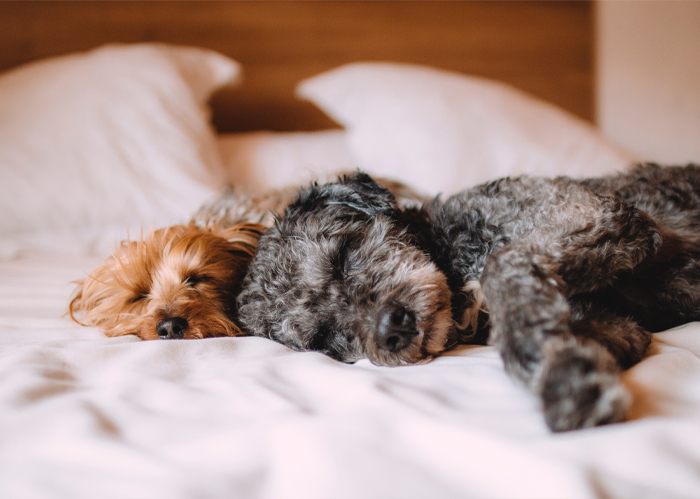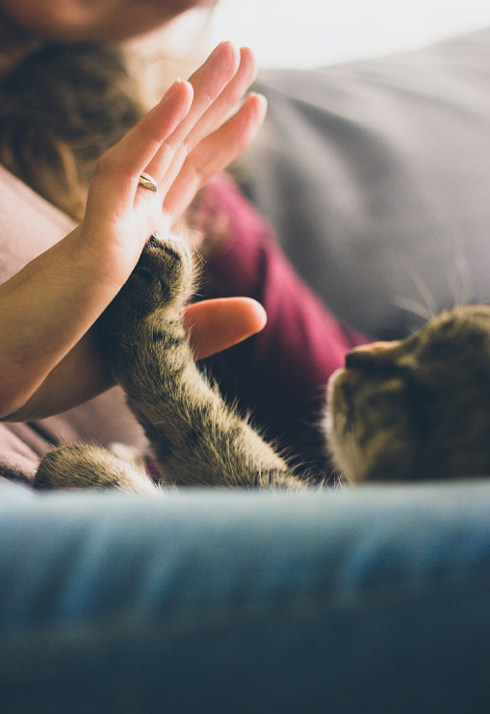Pet Toxins

Do you know exactly what’s in your pets beds? On average, dogs and cats sleep 12-18 hours per day, it’s important to properly research the materials used to make dog and cat beds. In pet beds, there are a number of harmful chemicals that can be present such as flame retardants, hormone disrupting substances, VOCs, pesticide residues and more. Not only are they cheaply made but most fiber, foam and synthetic pet beds are produced with toxic chemicals like arsenic, formaldehyde, lead and mercury. Due to the significantly lower quality standards in China, the toxic fillers used slowly pollute your home and put your pets health at risk. The US government does not have any regulations banning use of toxins and chemicals in dog beds.
Pet bed brands without toxins:
- Essentia Kingdom
- Rawganique
- OMI
- P.L.A.Y.
- The Futon Shop
- Molly Mutt
 If you’re wondering if there are toxins in your pets beds, you should also take a look at your cats kitty litter. If the brands you are currently using for your cat(s) is toxic, it could potentially pose a health risk to you and your pets. Many mass market cat litters contain significant amounts of silica dust which has been linked to upper respiratory issues in cats. The chemical fragrances in many cat litter‘s can also be toxic to cats. Another issue is the sodium bentonite clay in “clumping” cat litters, when cats ingest this material it can cause gastrointestinal distress that in some cases can lead to death.
If you’re wondering if there are toxins in your pets beds, you should also take a look at your cats kitty litter. If the brands you are currently using for your cat(s) is toxic, it could potentially pose a health risk to you and your pets. Many mass market cat litters contain significant amounts of silica dust which has been linked to upper respiratory issues in cats. The chemical fragrances in many cat litter‘s can also be toxic to cats. Another issue is the sodium bentonite clay in “clumping” cat litters, when cats ingest this material it can cause gastrointestinal distress that in some cases can lead to death.
Cat litter brands without toxins:
- Worlds best multiple cat unscented litter
- Okocat Super soft clumping litter
- Pioneer Pet SmartCat all natural clumping litter
- Littermaid premium walnut litter
- Worlds best zero mess cat litter
- Frisco corn and wheat clumping litter
Do you love going to your local pet store and picking out a new fun toy for your beloved cat/dog? Spoiling your pet(s) is fun, but before you buy that new toy beware of hazardous materials. The longer a dog/cat gnaws or licks a toy, chemicals will begin “leaching” out of the toy meaning that these chemicals could then be swallowed with their saliva and be absorbed into the bloodstream through the gut, even if the animal doesn’t swallow pieces of the toy. In order to make toys more soft and flexible for dogs to play with and chew on, companies add phthalates and polyvinylchloride (hard material), which is a group of toxic chemicals. PVC also contains chlorine as dogs continue to chew the toys chlorine is released overtime, which can cause cancer and immune system damage. Bisphenol is a chemical used to manufacture poly carbonate plastics and can be found in the lining of canned dog food. It can cause disruptions to a dogs metabolism. The good news is that there are resources, tricks and specific products that can help you ensure the toys you give your dog will probably be safe for them to bite, chew and chase.
Pet toy brands without toxins:
- West Paw
- Kong
- The Dapper Dog
- Muttropolis
- Tall Tails
- Humboldt Pet Supply
- Pupjoy
- Cats Play
- Cherrybrook
- Letcome
You do your best to provide your family with earth-friendly products which are free of toxins and unsafe materials. Remember to do the same for your loving pets!
Resources:
www.mynaturopet.com
www.leafscore.com
www.scientificamerican.com
www.businessinsider.com
www.preventivevet.com